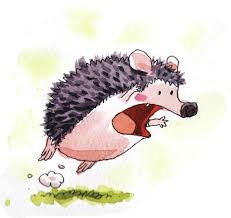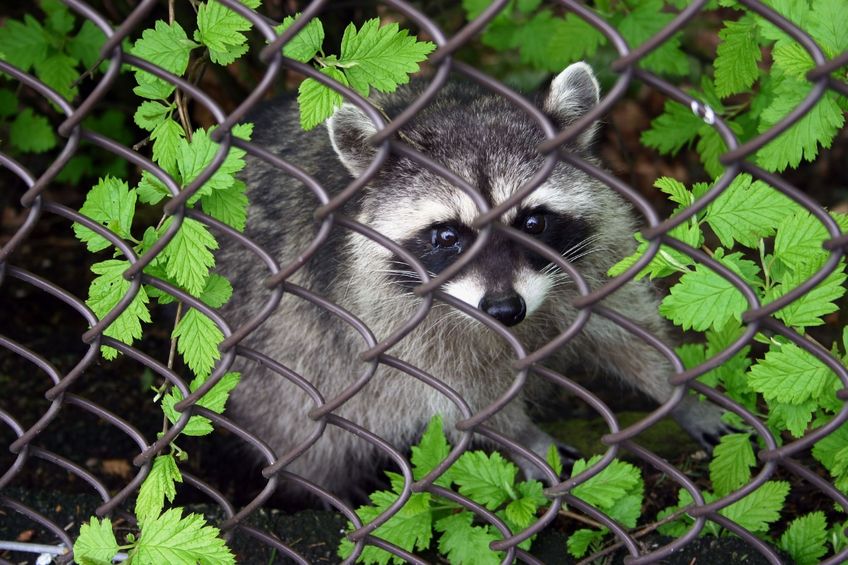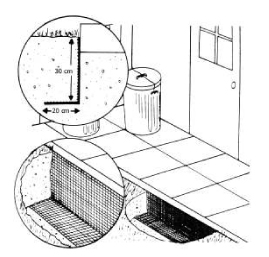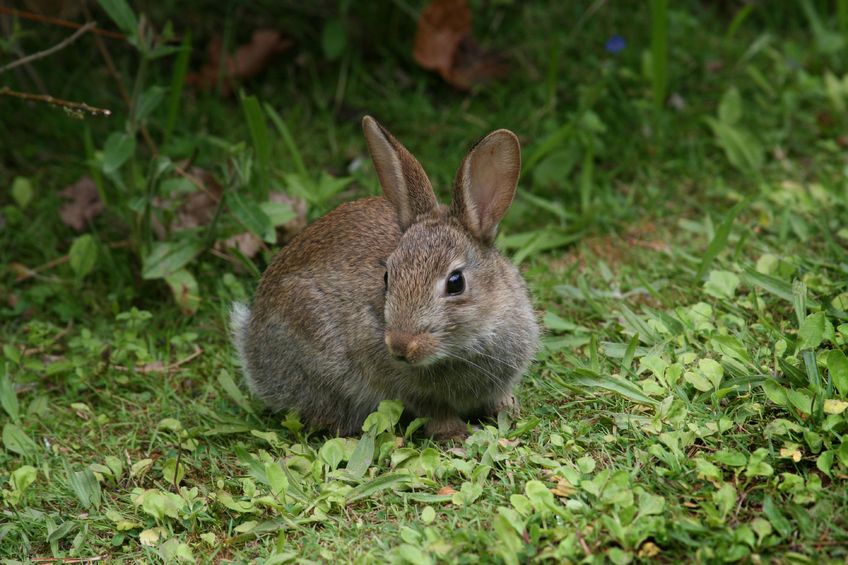Services to citizens
- Legal Affairs
- Animals
- Trees
- Residual waste collections
- Permits and certificates
- Taxation
- Hall Rentals and Reservations
- Public Safety
- Infrastructure
Management - Publications
- Municipal By-Laws
- Scholarships
- Contests
- Solicitations
Wildlife
Is a small animal a bit too close for comfort?
Caution! Coexistence with urban wildlife is a statutory requirement…
A small animal has taken up residence on your property and is causing damages? Well, its presence is no mere coincidence - it didn’t show up on your doorstep by accident... but because involuntarily, you offered it safety, food and shelter, and it simply could not resist such an inviting proposal!
As a result : your little tenant has placed itself under the protection of section 67 of An Act respecting the conservation and development of wildlife, R.S.Q., c. C-61.1 prohibiting the killing or capture of an animal attacking a person or causing damage to his property, unless he is unable to frighten the animal away or prevent it from causing damage.
This provision is reinforced by sections 445 and following of the Criminal Code which prohibit all forms of cruelty to animals including poisoning.
4 GOALS TO ATTAIN
 GOAL 1 : SCARING THE ANIMAL AWAY, NOT CATCHING IT…
GOAL 1 : SCARING THE ANIMAL AWAY, NOT CATCHING IT…
There are several techniques to shoo your unwanted friend away from your property without causing it any harm.
If the scare tactics mentioned below appear to be ineffective, please call the Kirkland Animal Control Division at 514 630-2727 during regular business hours. The Animal Controller will help you find solutions to your problem. Please note that capturing the animal to relocate it elsewhere is a task that can only be performed using the cages supplied by the Town and must always be considered as a means of last resort. Residents who make such a request must be able to prove they have tried everything they could to shoo the animal away beforehand.
Mechanical deterrents
Two types of devices available in stores are particularly effective for shooing small animals away:
- The Solar Pest Repeller: Often used in flower and vegetable gardens, this solar powered environmentally friendly device emits sounds and vibration to shoo small animals away.
- The ScareCrow: Hooked up to a garden hose, this motion-activated sprinkler device shoots out a stream of water directed at the pest crossing the sensor’s path - particularly effective for raccoons, groundhogs, skunks and stray cats.
Odorous repellents
Different odorous repellents for use in gardens and flowerbeds are also available in stores. Examples include “Critter Ridder” in spray or granular form and “ECO Commercial”, an all-purpose biodegradable cleaner. Spraying plants with a mixture of hot peppers, tomatoes and water also produces great results.
GOAL 2 : DISLODGING THE ANIMAL, NOT TRAPPING IT…
 Animals who took up residence under a deck, crawl space or garden shed or who have made your attic, garage or chimney their new home, can be dislodged. However, beware that babies could be nesting in that space. Before fencing off a point of entry, make sure the animal and its young are not trapped inside.
Animals who took up residence under a deck, crawl space or garden shed or who have made your attic, garage or chimney their new home, can be dislodged. However, beware that babies could be nesting in that space. Before fencing off a point of entry, make sure the animal and its young are not trapped inside.
To verify whether a small animal lives at the suspected location, identify the main point of entry and cover it with newspaper. If within the next 48 hours, you notice that the newspaper has moved, you can put the animal’s eviction process into motion!
Preferably wait for a sunny day to dislodge your visitor.
 Under a deck, crawl space or shed
Under a deck, crawl space or shed
- Buy 50 cm wide galvanized steel or other sturdy metal wire-netting (chicken wiring will not withstand a groundhog’s teeth).
- In full daylight, dig a 30 cm deep x 20 cm wide trench around the area to be protected.
- Make an L-shaped footer by folding the wire meshing at a 90 degree angle and install it along three of the four sides of the area you wish to protect, leaving an opening for the animal to exit. The 20 cm section should rest at the bottom of the trench with the 30 cm section extending upward to rest against the top of the structure.
- Monitor the floured area over the next few hours and loosely install the wire meshing on the 4th side as soon as you see paw prints heading out.
In an attic, garage or chimney
- Locate the entrances used by the animal
- Turn on a battery-operated radio or flashlight to disturb the animal
- Spray the area with an odorous animal repellent
- Be alert for the animal to emerge* pay attention to noises and if feasible, spread flour in front of the entrance to follow its paw prints.
- After ensuring the animal is out, block all accesses with galvanized steel wire meshing
- If an animal is stuck inside a chimney, lower a rope of at least 5 cm in diameter with knots at every 30 cm to help it climb out.
* Squirrels usually come out in the afternoon while skunks and raccoons emerge in the early evening
|
Closing the fenced-off area… To ensure there are no animals trapped behind the newly installed meshing, place a bit of food inside (peanut butter for a squirrel, jam for a skunk or raccoon and apple for a groundhog). If after three days the food still has not been touched, it is safe to say that there are no animals inside and you can proceed to permanently close off the fourth side. However, if the food has been touched or if in the days that follow the evicted animal returns, becomes agitated and roams around, if it makes sounds or digs frantically to reintegrate its nest, it may be that there are babies trapped inside. Such situation requires the immediate removal of part of the meshing to allow the animal to retrieve its young. In addition to protecting the babies from a horrible death and preventing ensuing foul smells, it will avoid damage likely to be caused by the mother trying to reach her babies. |
GOAL 3 : KEEPING THE ANIMAL AWAY…
 Be the wiser one …
Be the wiser one …
Eliminate odours that might attract them
- Use securely closing containers that won’t open if knocked down (garbage cans and bins equipped with a lid)
- Place your containers at the curb the morning of the collection as opposed to the eve
- Wash your containers with Javel water to eliminate odours
- Store your brown bin and garbage cans in the garage or shed
- When using garbage bags, place two mothballs inside each bag before closing it
Eliminate its access to resources
- Plant flower varieties that animals dislike such as narcissus, fritillaries and hyacinths
- Before planting bulbs, spray them with animal repellent. In the case of non-edible plants, spray the leaves as well.
- Refrain from cultivating corn and plants with red and orange fruits that attract small animals
- Block access to your backyard composter
- Install wire netting on the soil surface above the bulbs
- Illuminate the area to be protected to discourage nocturnal visitors... and put on some music – they don’t tolerate noise
- Install bird feeders at least 1 m above the ground and 3 m away from any spot from which a squirrel may launch itself
- Invest in squirrel proof feeders or block access by placing an inverted cone on top of the feeder
Eliminate its access to shelter
- Close off access under the porch, deck, garden shed and concrete slab with wire meshing
- Ensure your roof, siding and canopy are in good repair to prevent access to the attic
- Install galvanized steel meshing on ventilation and dryer vents
- Prune the trees near the house to prevent animals from accessing the building by climbing the tree
- Close off the chimney top with 1 cm wire meshing or a chimney cap
- Block all access to the building by closing off openings with 5 cm wire mesh
GOAL 4 : LEARN MORE ABOUT THE ANIMAL TO BETTER LIVE TOGETHER
And so, while skunks, raccoons, hares, squirrels and groundhogs may be unwelcome on our properties, let us not forget that they are animals of the urban wildlife placed under the protection of the law with who we must learn to cohabitate.
For more information on better living with the urban fauna, call the Town’s Animal Control Division at 514 630-2727 or the Ministère des Forêts, de la Faune et des Parcs at 1 800 463-2191 (toll-free number).
QUESTIONS?
CONCERNS?
For more information on better living with the urban fauna, contact the Ministère des Forêts, de la Faune et des Parcs at 1 800 463-2191 (toll-free number).
Municipal Legislation
Pursuant to By-Law No 2020-54 relating to animals, in Kirkland it is prohibited to hunt, or to set traps for the purpose of capturing an animal. It is also forbidden to feed stray animals as well as pigeons, gulls, seagulls and squirrels, and all wild animals listed in Annex A of the By-Law.
The feeding of wild birds using bird feeders is however permitted provided it doesn’t cause nuisance to the neighbourhood.
For more information on these restrictions, please call the Kirkland Animal Control Division at 514 630-2727 during regular business hours.


